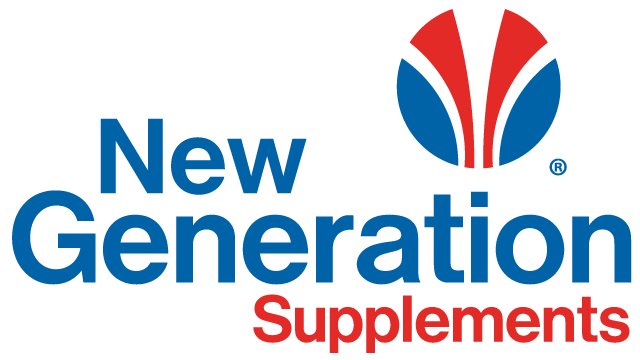A Wealth of Information
It is hard to discuss equine nutrition today without receiving a question on sugars. Sometimes it’s referred to as TSI, NSC, NFC, or carbohydrates. Horse owners are becoming more involved in their animal’s diets, more inquisitive, and there is a wealth of information out there. A quick google search for “sugar in horse feed” turns up millions of results. Unfortunately, not all those are entirely accurate, or researched, and can spread bad information.
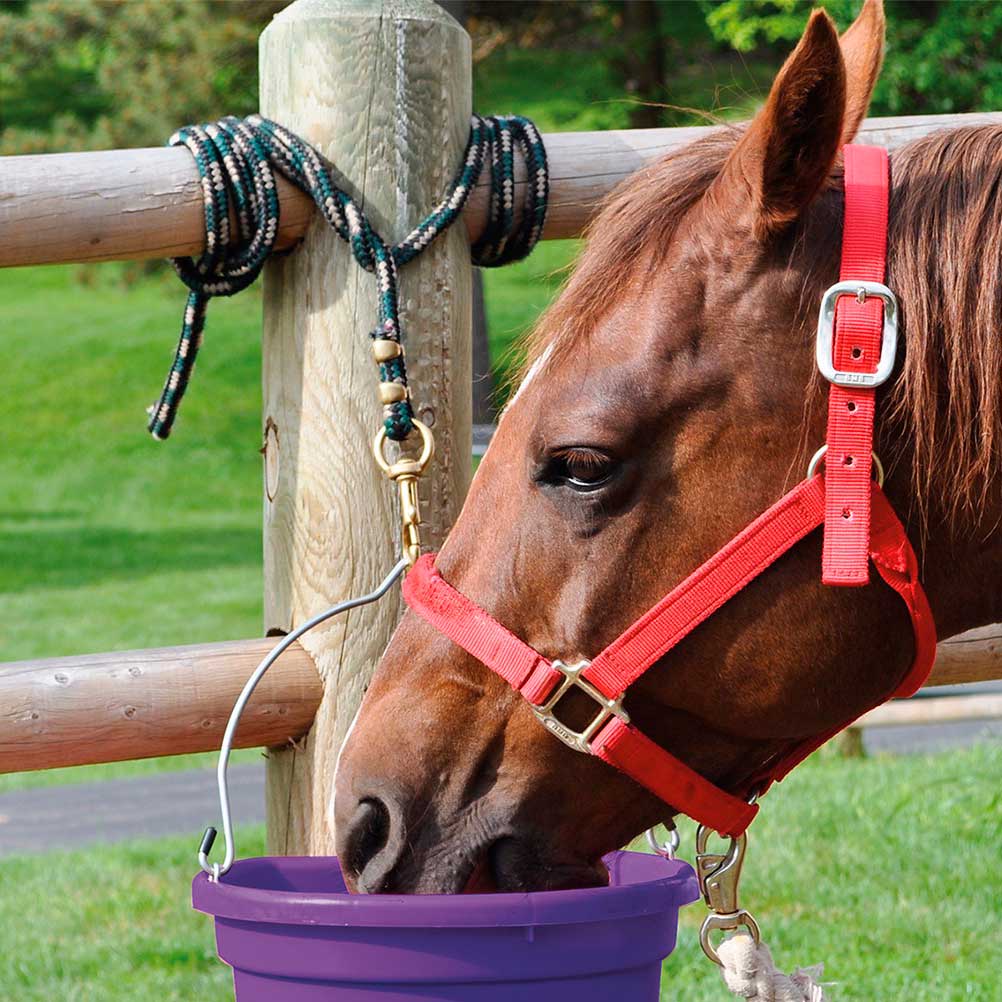
It’s time to dispel some myths on sugars:
Let us start to dispel some myths on sugars, and perhaps develop a common terminology. NSC (Nonstructural carbohydrates) is often referenced in relation to sugar content. NSC, as partitioned by digestibility, would include mono‐ and di‐saccharides, starch, oligosaccharides, and fructans; these being components of the cellular contents. NSC are readily broken down and absorbed in the small intestine providing a good source of energy, when provided in the right proportions and times. For hardworking performance horses this added boost of energy is necessary in order for the horse to maintain body condition and endurance while working.
Horses breakdown and absorb carbohydrates in the small intestine, which is usually 50‐70 feet long. The ability to absorb and properly utilize these nutrients is determined by the amount consumed per feeding. The digestion threshold for starch in the small intestine is 0.2‐0.4% of bodyweight per meal, intakes over this can cause hindgut overload leading to colic or laminitis.
This is where a low moisture block like HorsLic is a wonderful tool as it restricts the horse from consuming too much at any one time. A typical horse may visit HorsLic between 6 and 12 times per day on pasture or much more frequently in stalls or small turn-outs. These visits on pasture equate to only 2.5-3.5oz of HorsLic intake per meal. For a 1,000 pound horse each HorsLic meal would provide 0.006% of bodyweight NSC, well below the 0.2‐0.4% digestion threshold of the small intestine, or about the same amount of NSC as a couple of apple slices!
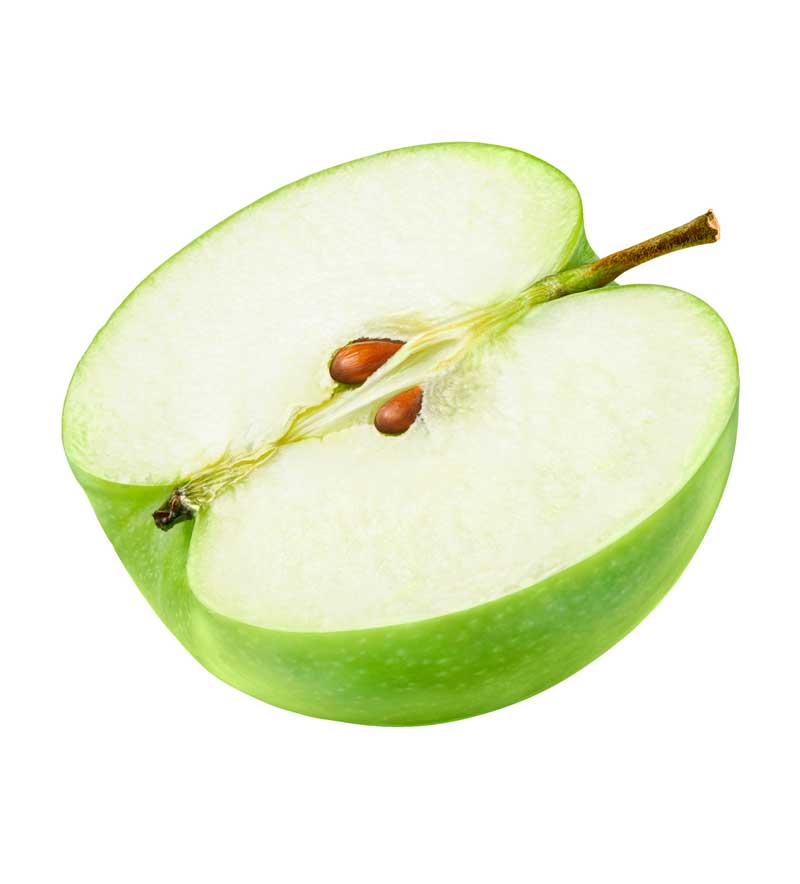
Fig. 1:
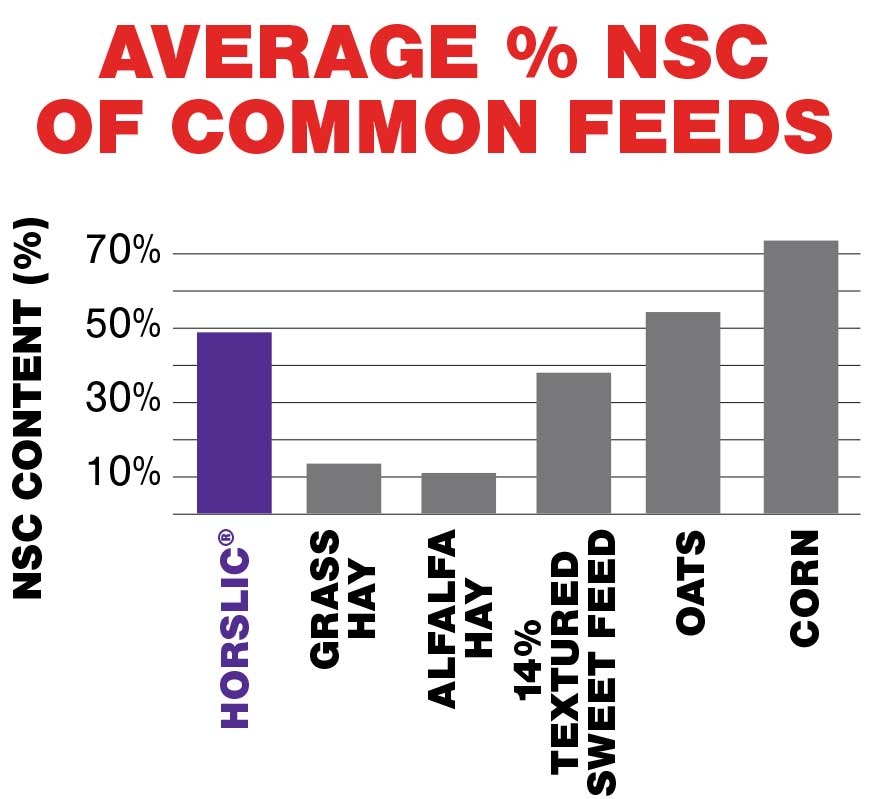
Average percent of NSC Content for a number of common feedstuffs.
Fig. 2:
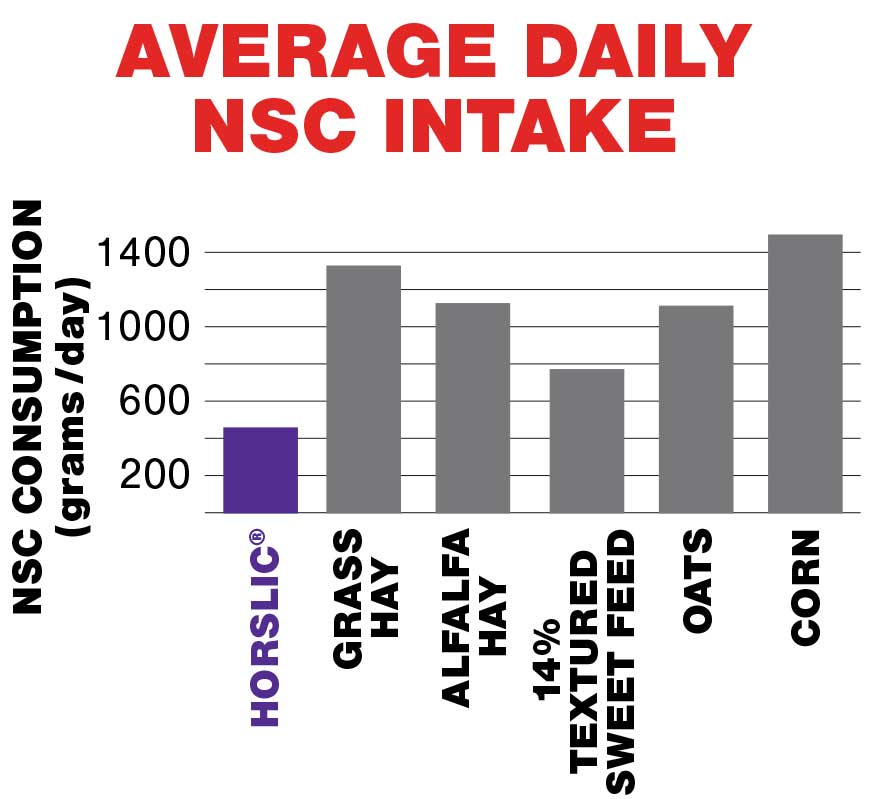
Total amount of NSC consumed, (grams/day), of common feedstuffs.
Fig. 3:
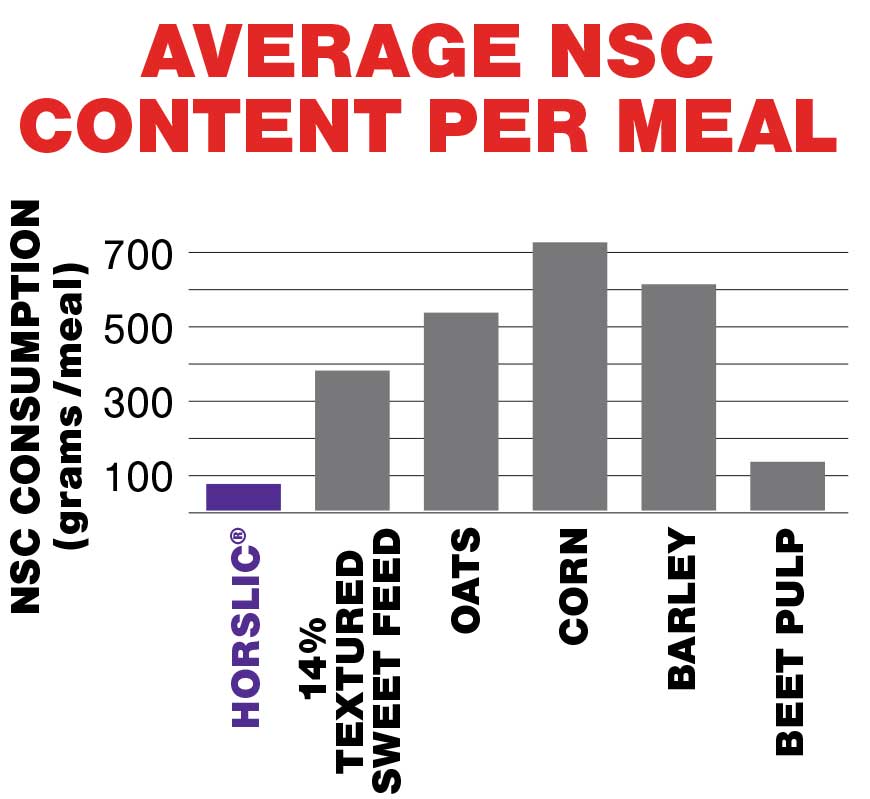
Amount of NSC consumed from a variety of typical horse feeds on a per meal basis, where animals are grain fed twice per day or allowed free choice access to HorsLic.
- Yearling Quarter Horse
- NSC digestion threshold of 0.2-0.4% bodyweight per meal, 725-1450g of NSC
- Each HorsLic meal is 15-22.5g with 48% being NSC, or about 7.5-10.8g of NSC content per meal
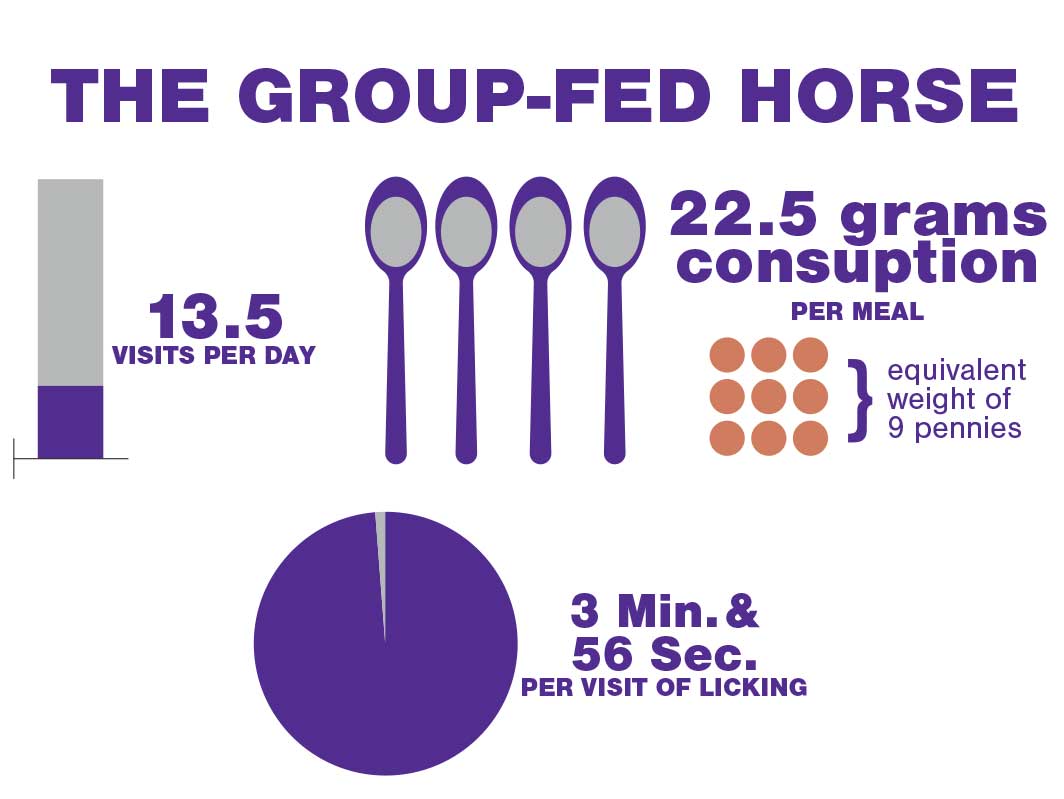
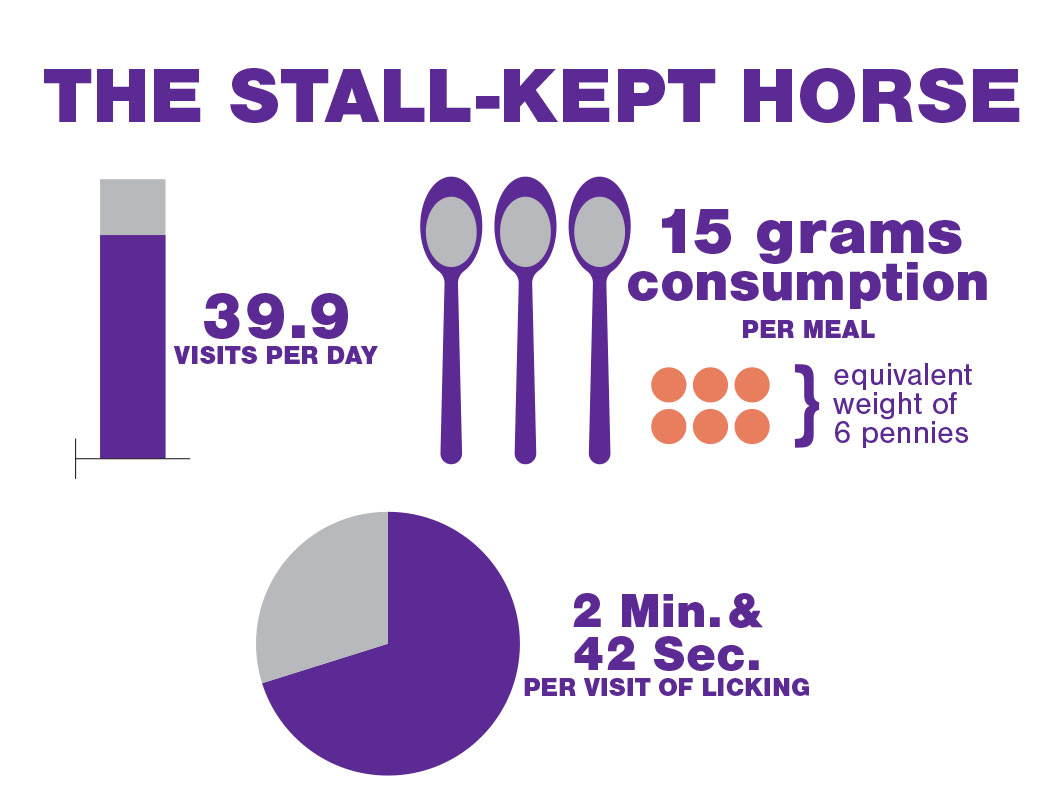
Research Credit: -T. Horne, J. Lattimer, J. Drouillard -2017
THE BOTTOM LINE:
-
HorsLic has lower NSC content per meal than traditional feeds
-
Frequent, small meals help maintain an even level of nutrient absorption
-
The total NSC content of HorsLic may be significantly less than alternative supplements
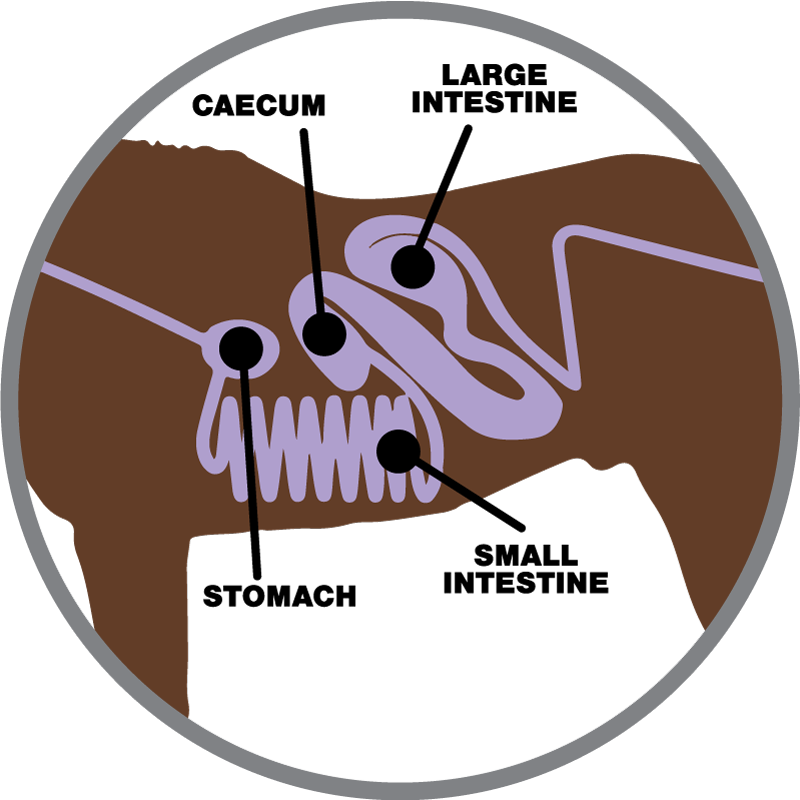
Figures are based on a 1,000 pound horse consuming 2.2% of bodyweight in either type hay. Being fed one of the grains or supplemental feeds provided at recommended 0.5% bodyweight level, divided between two feedings per day, or free choice access to a HorsLic supplement.
